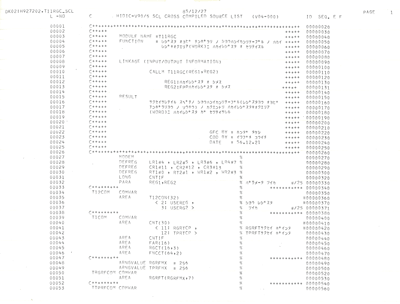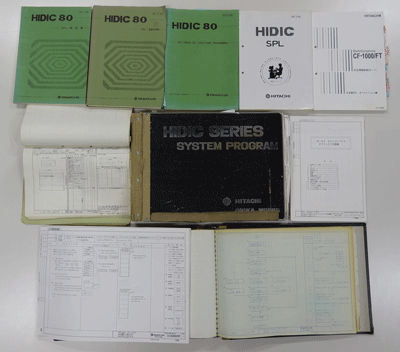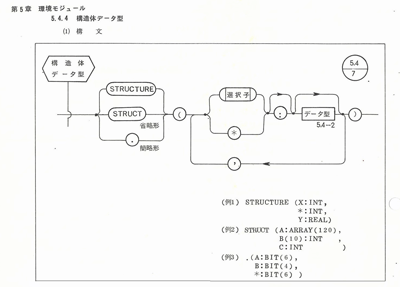

- Home >
- Artifacts of IP Heritage >
- 2017 >
- Structured Programming Language (SPL)
Structured Programming Language (SPL)



| Manufactured in | 1976〜2016 |
|---|---|
| Manufactured by | Hitachi, Ltd. |
| Owner | Hitachi, Ltd. |
| Location of historical materials | Omika Works, Infrastructure control system Division, Social Infrastructure Systems Business Unit, Hitachi, Ltd.
5-2-1 Omika-cho, Hitachi-shi, Ibaraki-ken, 319-1293 |
| Visitor information | Not open to the public (Ask for a visit) |
| Contact | Engineering Department, Omika Works Tel.+81-294-53-1111
https://www.hitachi.com/products/it/control_sys/portal/index.html (General inquiries) |
SPL was developed as a new-generation high-level language for the Hitachi HIDIC80 control computer in order to significantly increase the reliability and maintainability of large-scale embedded system application software in the mid-1970s.
Development began in March 1975, with the first version being completed in October 1976. After this, the U.S. Department of Defense, having similar aims, went forward with the development of a language called Ada. SPL, however, reached the stage of practical use several years before Ada.
Thus far, SPL has found application in the development projects of about 2,700 control systems in various fields both domestically and abroad, including steel production and railway control.
SPL is a top-down (hierarchical) structured programming language. By enabling the description of abstract concepts in a natural-style language at each level, it raises visibility and makes the program more self-explanatory.
The conventional language has to describe data and the processing section in the same program. On the other hand, SPL separates data from a program. The data section is centrally managed by the system and referencing to data is possible without declaration at each of the processing section, in this way eliminating defects caused by duplicate management errors of shared data. SPL also improves the quality of the overall software production process through the various types of functions that prevent defect factors from being carried over into later processes and through mechanisms that bring design concepts to the production site directly. SPL is the abbreviation of Software Production Language. The reasons behind the naming of this language SPL come from the concept of the issues mentioned above.
SPL also allows all generated objects to be re-entered, eliminating defects caused by the timing of executions.
